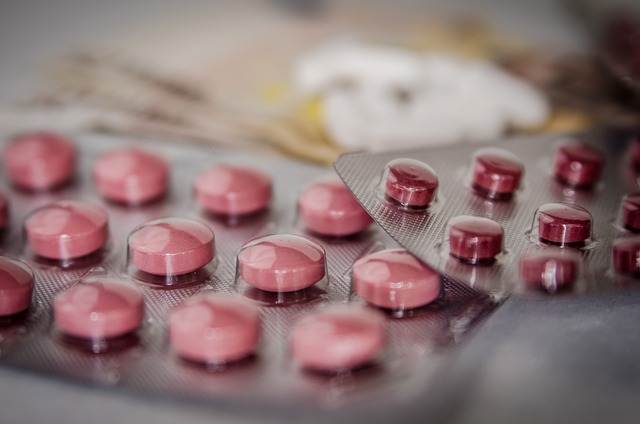Understanding Kidney Disease: Signs, Symptoms and Treatment Options
Kidney disease affects millions of people worldwide, often developing silently before symptoms become noticeable. Healthy kidneys filter waste from your blood, regulate blood pressure, stimulate red blood cell production, and maintain proper fluid balance. When kidneys begin to fail, treatment becomes essential to prevent complications and maintain quality of life. This article explores the key signs and symptoms of kidney disease and discusses available treatment options to help you better understand this serious condition.

What Are the Early Symptoms of Kidney Disease?
Early kidney disease typically produces few noticeable symptoms, which is why it’s often called a “silent disease.” However, some subtle signs may appear as kidney function begins to decline. These early symptoms can include fatigue that’s out of proportion to your activity level, trouble concentrating, poor appetite, difficulty sleeping, muscle cramps (especially at night), swollen feet and ankles, puffiness around your eyes (especially in the morning), and dry, itchy skin. You may also notice changes in urination patterns, such as needing to urinate more frequently, particularly at night (nocturia), or producing urine that appears foamy or bubbly due to protein leakage.
Many people dismiss these early symptoms as simply signs of aging or stress, which is why kidney disease often progresses undetected until more serious symptoms develop. Regular check-ups with blood and urine tests are essential for those at risk of kidney disease, including people with diabetes, high blood pressure, or a family history of kidney problems.
10 Signs Your Kidneys are Crying for Help
When kidney function significantly declines, the body sends clearer distress signals. Here are ten important warning signs that shouldn’t be ignored:
-
Persistent puffiness around your eyes or swelling in feet, ankles, hands, or face
-
Foamy or bubbly urine (indicating protein leakage)
-
Pink, red, or cola-colored urine (suggesting blood in urine)
-
Frequent urination, especially at night
-
High blood pressure that’s difficult to control
-
Unexplained fatigue and weakness
-
Shortness of breath (due to fluid buildup or anemia)
-
Metallic taste in mouth or ammonia breath
-
Nausea, vomiting, or loss of appetite
-
Difficulty concentrating, confusion, or memory problems
These symptoms occur because as kidneys fail, they cannot efficiently remove waste products and excess fluid from the body. The buildup of these substances (called uremia) affects various bodily systems, from cardiovascular to neurological. If you experience several of these symptoms, especially if you have risk factors for kidney disease, seeking prompt medical attention is crucial.
How Does Chronic Kidney Disease Progress?
Chronic kidney disease (CKD) typically develops slowly over months or years, progressing through five distinct stages determined by measuring glomerular filtration rate (GFR), which indicates how well the kidneys filter blood. In stage 1, kidney function is normal but there are signs of kidney damage, such as protein in urine. By stage 5 (end-stage renal disease), kidney function has declined to less than 15% of normal capacity.
As CKD progresses, symptoms become more pronounced. In the middle stages (3-4), patients often experience increased fatigue, fluid retention, high blood pressure, and changes in urination. Anemia may develop as failing kidneys produce less erythropoietin, the hormone that stimulates red blood cell production. Bone problems may also arise due to mineral imbalances, and cardiovascular complications become more likely.
Without proper treatment, CKD can lead to kidney failure requiring dialysis or transplantation. However, early detection and appropriate management can significantly slow progression and sometimes even halt the disease, especially in its earlier stages.
What Treatment Options Are Available for Kidney Disease?
Treatment for kidney disease depends on the underlying cause and stage of progression. The primary goals are to slow disease progression, manage complications, and replace kidney function when necessary. Common treatment approaches include:
Lifestyle Modifications
Dietary changes are often the first line of defense, limiting sodium, potassium, phosphorus, and protein intake as needed. Regular exercise is encouraged to maintain overall health, while smoking cessation and alcohol limitation are strongly recommended.
Medication Management
Various medications may be prescribed to control blood pressure, reduce protein in urine, lower cholesterol, treat anemia, manage mineral imbalances, and control blood glucose in diabetic patients. These medications help manage symptoms and slow disease progression.
Dialysis
When kidney function falls below 10-15%, dialysis becomes necessary to artificially filter the blood. Hemodialysis uses a machine to filter blood outside the body, typically requiring three sessions per week at a dialysis center, though home hemodialysis is sometimes an option. Peritoneal dialysis uses the lining of the abdomen to filter blood inside the body and can often be performed at home.
Kidney Transplantation
A kidney transplant is considered the optimal treatment for end-stage renal disease. The procedure involves surgically placing a healthy kidney from either a living or deceased donor into the patient’s body. While transplantation offers the best quality of life, it requires lifelong immunosuppressive medications to prevent organ rejection.
Common Treatment Approaches Based on Disease Stage
Treatment approaches vary depending on the stage of kidney disease, with focus shifting from prevention to management as the disease progresses:
| Disease Stage | GFR Range | Primary Treatment Approaches | Typical Monitoring |
|---|---|---|---|
| Stage 1-2 | 60-89 ml/min | Blood pressure control, Blood sugar management, Healthy lifestyle | Every 6-12 months |
| Stage 3 | 30-59 ml/min | Medication adjustments, Dietary restrictions, Anemia management | Every 3-6 months |
| Stage 4 | 15-29 ml/min | Preparation for renal replacement, Strict dietary management, Comprehensive care | Every 1-3 months |
| Stage 5 | <15 ml/min | Dialysis, Transplant evaluation, Palliative care options | Monthly or more frequently |
This article is for informational purposes only and should not be considered medical advice. Please consult a qualified healthcare professional for personalized guidance and treatment.




